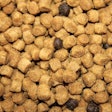
Pet food ingredient suppliers have their work cut out for them. With trends like clean label, recipe customization and an overflowing specialty segment driving formulators, finding the right combinations of the “right” ingredients has become more complex than ever.
The challenges of clean label
“With consumers increasingly expecting their pet’s food to be free from additives, pet food producers are faced with a range of technical challenges,” said Myriam Snaet, head of market intelligence and consumer insights at BENEO-Animal Nutrition, a supplier of a range of natural ingredients such as vegetable proteins, digestible carbohydrates and prebiotic chicory root fibers. “Functional, clean label ingredients are increasingly being used — especially for wet pet foods — as an alternative to gums or modified starches.”
According to a BENEO pet food survey (which included dog owners in Brazil, China, Germany, the United Kingdom and the United States) conducted in 2018, when pet owners were asked which ingredients they considered to be the most healthy/natural, the top-ranked ingredients were those with names that referred to natural and known ingredients.
“Clean, simple and transparent labels will continue to be prevalent in 2019, which will drive ingredient selections,” said Jennifer Stephens, vice president of marketing for Fiberstar Inc., a biotechnology company focused on enhancing food performance by manufacturing and marketing value-added food ingredients. “To be more transparent, specialty food manufacturers may highlight the cut of meat used. They may also begin using more functional whole foods in the formulation to deliver nutrition while minimizing the ingredient declaration.”
Helping the ingredient label meet consumer expectations is where these suppliers come in. BENEO’s rice starch, for example, can replace a guar/xanthan gum mixture and has the benefit of being an easily recognizable and read ingredient. Fiberstar’s largest brand, Citri-Fi, is a natural citrus fiber (labeled as “citrus fiber” on ingredient statements) that pet food and treat formulators use to displace other hydrocolloids, fibers that don’t retain high levels of moisture and fat, or to minimize the amount of ingredients used in a formulation — common strategies when cleaning up pet food and treat labels.
Providing functional solutions to pet food formulators
“We have seen a growing list of customers seeking human-grade enzymes and probiotics for pet foods,” said Marc Jensen, technical marketing manager for BIO-CAT and BIO-CAT Microbials, companies that provide biotech solutions via custom enzyme and microbial blending. Specialty pet food formulations looking to meet pet owner desires for the highest-quality products and the need to make the accompanying ingredients work together bring multiple challenges for ingredient suppliers. The companies’ products and solutions work for clients in multiple ways, according to Jensen, including as processing aids and label claim enhancement.
“BIO-CAT Enzymes has long been a supplier of enzymes and probiotics to pet food manufacturers primarily as processing aids for raw materials,” said Jensen, and “digestive enzymes unlock nutrient potential in both conventional and emerging protein sources which can enhance label claims cost efficiently.”
One aspect of functional ingredients that will continue to get attention, according to suppliers, involves pet digestive health.
“According to recent BENEO research, 83 percent of pet owners are now highly concerned with the digestive health of their pet,” said Snaet. “It is interesting to see that food, rather than medication, is becoming the preferred way to support it. Recent research [by GlobalData in 2018] has shown that more than half of owners (58 percent) always or frequently choose foods to improve their pets’ digestion and only 9 percent use medication to solve digestive difficulties. With such a focus on health and well-being, pet food producers will continue to increase their use of functional ingredients in both wet and dry products in 2019 and beyond.”
BENEO’s prebiotic chicory root fibers are popular among the company’s customers, according to Snaet, as the fibers have long been known to enhance digestive health in both humans and animals — yet another functional human benefit being transferred to pet owners’ furry companions.
Meeting the customization trend
Innovation and customization of formulations, a result of the larger and quickly growing pet food customization trend, is definitely something that BIO-CAT expects to continue seeing.
“We predict increasing innovation in high-quality fat sourcing for pet food ingredients,” said Jensen. “We anticipate a growing demand for customized blends of enzymes and probiotics for product innovation and cost efficiency.”
According to Stephens, the trend will continue to affect pet food formulation challenges from multiple angles, providing ingredient suppliers with the opportunity to innovate and shine.
“The customized nutrition trend will continue to grow,” she said. “Customized nutrition designed for each pet age segment has been marketed but more on a mass scale. Today, there are foods and treats targeting any condition or health need. This is driven by humans seeing customized nutrition as the new normal. On the ingredient side, this may mean using more whole foods to deliver specific vitamins and minerals. Or this may introduce more botanical sources to promote health for certain conditions.”


















